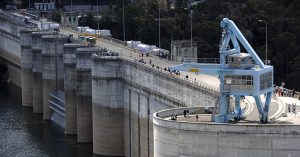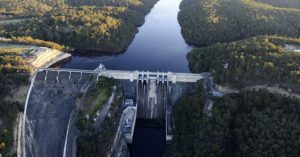 A coalition of conservationists, traditional owners and flood policy experts are seeking international intervention to halt the NSW Government’s plan to raise the Warragamba dam wall, which they say poses an “unprecedented threat to Australia’s World Heritage”.
A coalition of conservationists, traditional owners and flood policy experts are seeking international intervention to halt the NSW Government’s plan to raise the Warragamba dam wall, which they say poses an “unprecedented threat to Australia’s World Heritage”.
In a joint letter, authored by former NSW Environment Minister Bob Debus, UNESCO’s World Heritage Committee has been urged to request a comprehensive report from the Australian Government on the impacts of the dam raising and a moratorium on any State Government approval processes until the threat to the World Heritage listed Blue Mountains has been assessed.
The document is co-signed by the principal author of the nomination that successfully saw the Blue Mountains granted World Heritage status, Joan Domicelj, along with traditional owners, ecologists, academics, national environment groups, and leading conservationists including Bob Brown, Professor Brendan Mackey and Christine Milne.
Representatives of the group will travel to Bahrain later this month to the annual meeting of the World Heritage Committee, which along with having responsibility for inscribing sites on the World Heritage List, also can revoke listing or place properties on the list of World Heritage in Danger.
The letter outlines a range of serious impacts on critical ecosystems in the Blue Mountains World Heritage Area, more than 1,000 hectares of which will be inundated under the plan.
The proposed increased height of 14 metres will also result in flooding 65 kilometres of wild rivers, submerging hundreds of Indigenous cultural sites.
“If the inundation proposal were to proceed the values and integrity of the Greater Blue Mountains World Heritage Area, Blue Mountains National Park, declared wilderness, a declared wild river, national heritage and the special catchment area would be significantly degraded,” Mr Debus wrote.
[social_quote duplicate=”no” align=”default”]“The area proposed for inundation includes up to 1,000 hectares of declared World Heritage property and 65 kilometres of wilderness rivers and streams.[/social_quote]
“We submit that the World Heritage Committee request the Australian Government a moratorium be placed upon any State approval processes until the World Heritage Committee has been able to consider its position upon the proposal.’’

Environment and floodplain policy expert, Australian National University associate professor Jamie Pittock, said alternatives must be considered as international best practice moves away from structural flood mitigation.
“Alternatives to raising the dam should be fully considered,” he said.
“Supplying more of Sydney’s water from other sources is one option that would enable part of the airspace in the existing dam to be used for flood control.
“Dams do not stop the most severe floods. Wivenhoe Dam did not save Brisbane from flooding in 2011. Flood control dams lead to downstream development on the floodplain that increases risk.
“Best practice in China, Europe and the United States involves restoring floodplains to safely catch and release peak floods.”
Colong Foundation wild rivers campaigner Harry Burkitt described the NSW Government’s current approach as rushed, ill-considered, and shrouded in secrecy.
“NSW Utilities Minister Don Harwin has said the development of the North West Growth sector is reliant upon the dam raising, with a large section of this area on the floodplain,” Mr Burkitt said.
“But the cost of this development would be inundation across thousands of hectares of wilderness, destroying threatened habitats including threatened grassy woodland communities, home to Sydney’s last wild Emu population.’’
WARRAGAMBA DAM SNAPSHOT
1960 – Warragamba Dam constructed, flooding the Burragorang valley and displacing its communities
1989 – Dam wall raised 5 metres for dam safety
1992 – Fahey Government initiates plans to raise dam a further 23 metres
1995 – Carr Government elected on promise not to raise dam wall and implement alternative plan due to large cost and environmental impacts
2002 – Warragamba Auxiliary spillway constructed by the Carr Government to ensure dam safety
2016 – Baird Government announces plans to raise dam wall by 14 metres
2017 – Infrastructure NSW releases prospectus on dam raising, sighting need to house an additional 130,000 people on the Hawkesbury Nepean floodplain
